A solar powered fan offers an eco-friendly way to stay cool without relying on electricity from the grid. As energy costs rise and climate concerns grow, more people are turning to sustainable alternatives for everyday needs. This type of fan uses sunlight to generate power, making it ideal for outdoor spaces, cabins, RVs, and emergency kits. Unlike traditional fans that plug into outlets, a solar powered fan runs entirely on renewable energy. It captures sunlight through a photovoltaic panel and converts it into motion, creating airflow with zero emissions. Additionally, these fans often come with rechargeable batteries, allowing them to operate even after sunset.
Therefore, they provide cooling during both day and night. Many models are portable, lightweight, and easy to install. They require no wiring or complex setup. As a result, users enjoy flexibility in placement and usage. Whether mounted on a wall, placed on a table, or clipped to a tent, a solar powered fan adapts to various environments. Understanding how it works and where it performs best helps you make informed decisions. This guide explores design, benefits, applications, and tips for maximizing efficiency.
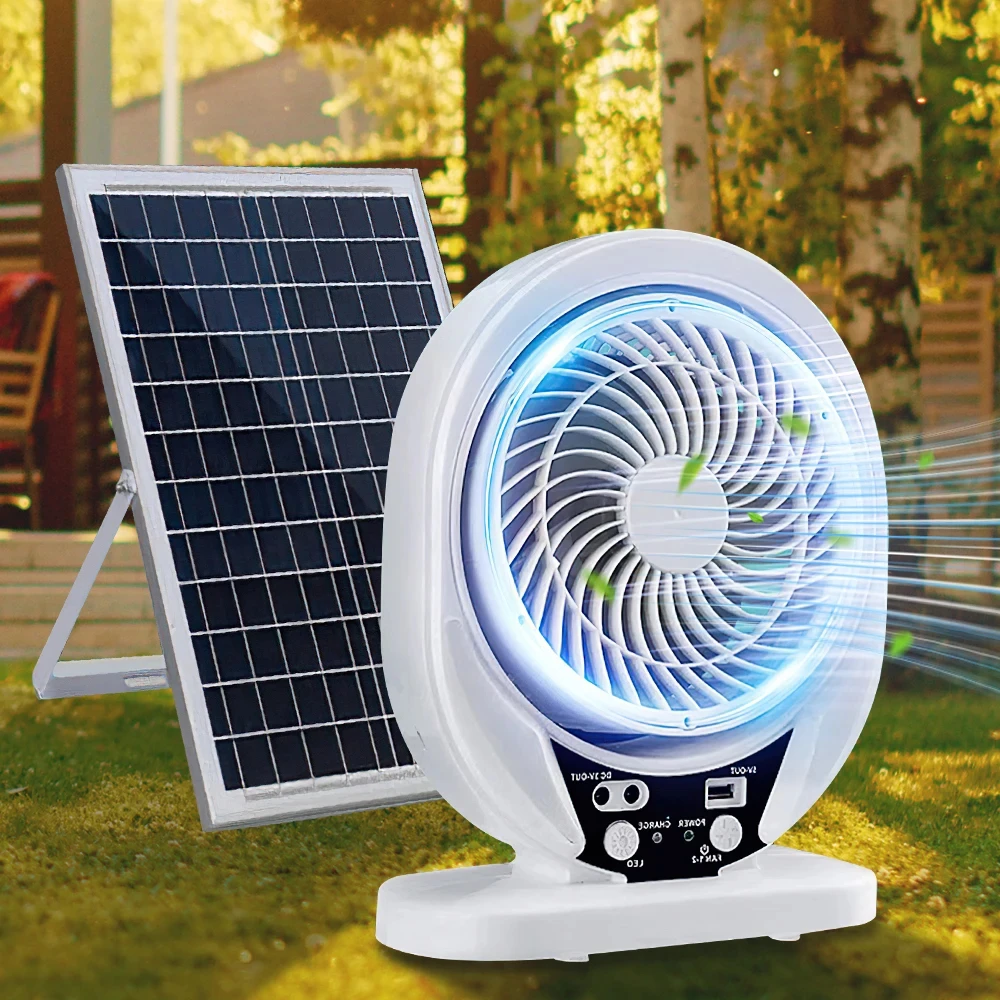 How a Solar-Powered Fan Converts Sunlight Into Cooling Air
How a Solar-Powered Fan Converts Sunlight Into Cooling Air
A solar powered fan operates using a simple yet effective process. First, sunlight hits the solar panel attached to the unit. The panel contains photovoltaic cells that absorb light energy. These cells then convert the sunlight into direct current (DC) electricity. Next, the electrical current flows into the fan’s motor. The motor uses this power to spin the blades and generate airflow. Some models include a voltage regulator to stabilize the power supply.
This prevents sudden surges that could damage internal components. In addition, many units feature built-in batteries. These store excess energy when sunlight is strong. Later, the stored power keeps the fan running during cloudy periods or at night. Charge controllers manage battery input and output safely. They prevent overcharging and deep discharge. Most solar panels are designed to work in partial sunlight. Even on overcast days, they produce enough energy for low-speed operation. Efficiency depends on panel size, angle, and exposure. For optimal performance, position the panel facing south in the northern hemisphere. Tilt it toward the sun for maximum absorption. By understanding this process, users can get the most from their solar powered fan.
Key Components of a Solar-Powered Fan System
Several essential parts make a solar powered fan function effectively. The solar panel is the primary component. It collects sunlight and generates electricity. Panels vary in size and wattage, affecting overall power output. Higher wattage means faster charging and stronger airflow. Next, the fan motor drives blade rotation. Quality motors run quietly and last longer. Brushless DC motors are common due to their efficiency and durability. The blades themselves influence air volume and noise level. Larger blades move more air but may require more power. Smaller blades suit compact designs and low-light conditions. A rechargeable battery stores energy for later use.
Lithium-ion batteries are popular because they hold charge well and last for years. Some fans include a charge controller. This device protects the battery and regulates power flow. Without it, overcharging could shorten battery life. Mounting hardware allows secure installation. Wall brackets, stands, or clips help position the fan correctly. Cables connect the panel to the fan unit. Weather-resistant wires prevent damage from moisture and heat. Finally, switches or speed controls let users adjust airflow. LED indicators show power status and battery level. Together, these components create a reliable, self-sustaining cooling system.
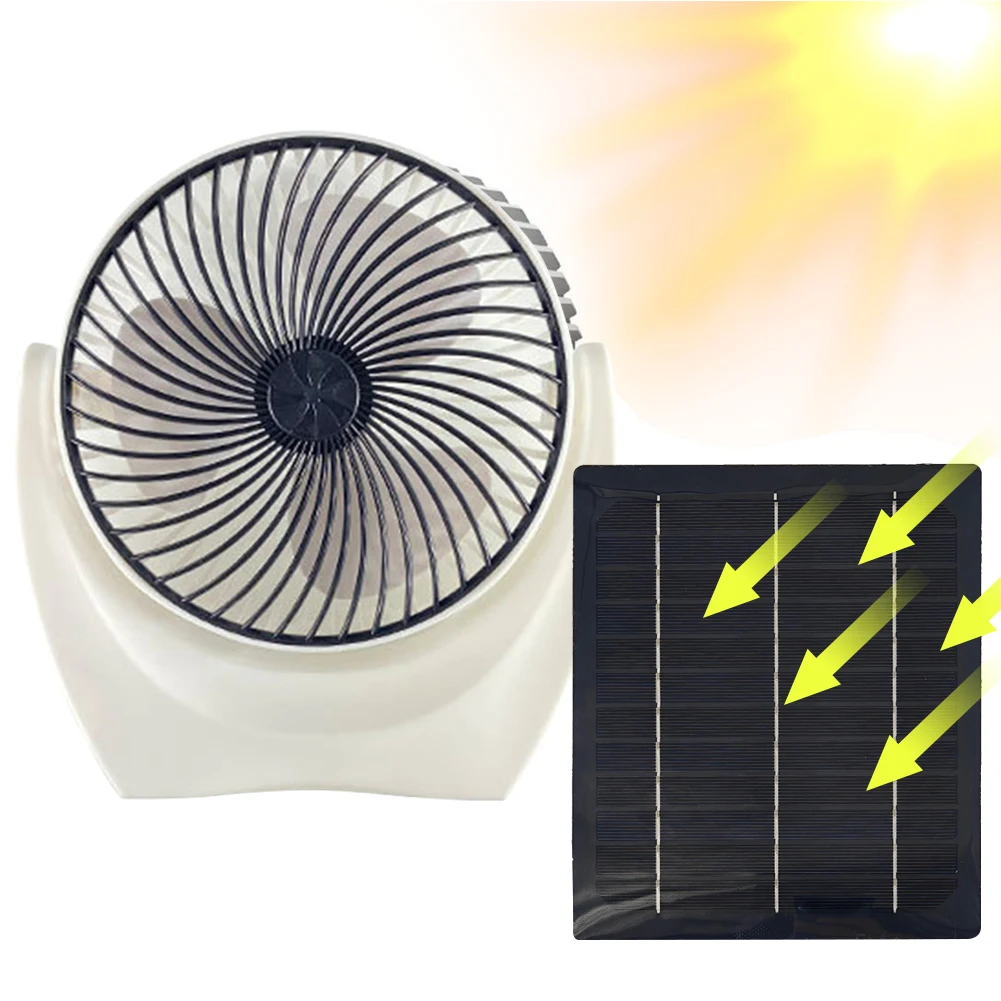 Benefits of Using a Solar-Powered Fan in Different Environments
Benefits of Using a Solar-Powered Fan in Different Environments
Using a solar powered fan brings multiple advantages across various settings. In homes, it reduces reliance on grid electricity. This lowers utility bills and decreases carbon footprint. For off-grid cabins, it provides consistent airflow without generators. Campers benefit from quiet, portable cooling in tents and trailers. Since there’s no noise from engines, sleep quality improves. RV owners install solar fans to ventilate interiors during hot days. This prevents heat buildup and mold growth. Greenhouses use them to circulate air and regulate temperature.
Proper airflow supports plant health and prevents fungal diseases. In sheds and garages, solar fans remove stale air and reduce humidity. This protects tools and stored items from rust. Vehicles like cars and vans can overheat in summer. A small solar fan mounted on a window vents trapped heat. It cools the interior before driving. Emergency preparedness kits include solar fans for power outages. They offer comfort when other systems fail. Disaster relief teams use them in temporary shelters. Public parks and bus stops sometimes feature large solar fans. These improve comfort in waiting areas without infrastructure. Overall, the versatility of a solar powered fan makes it valuable in many scenarios.
Why Solar Fans Are Ideal for Outdoor and Remote Locations
Remote and outdoor locations often lack access to electrical outlets. That’s where a solar powered fan becomes indispensable. Hikers and backpackers carry compact models for ventilation in tents. These fans run all day when placed in sunlight. Fishermen use them on boats to stay cool under the sun. They clip easily to railings or canopy frames. Farmers install them in barns to keep animals comfortable. Livestock perform better in cooler, well-ventilated spaces. Construction workers place solar fans in temporary job site trailers. They maintain airflow without running noisy generators.
Survivalists rely on solar fans during extended off-grid living. They integrate well with other solar-powered gear. Developing regions with unstable power grids benefit greatly. Families use solar fans to improve indoor air quality. Schools and clinics adopt them to enhance comfort. Disaster zones often lose electricity after storms. Solar fans provide immediate relief without fuel. Also, national parks restrict generator use. Visitors bring solar fans to comply with regulations. These units leave no pollution and make little noise. Wildlife remains undisturbed. Because they need only sunlight, solar powered fans work almost anywhere. Their independence from infrastructure makes them uniquely suited for remote use.
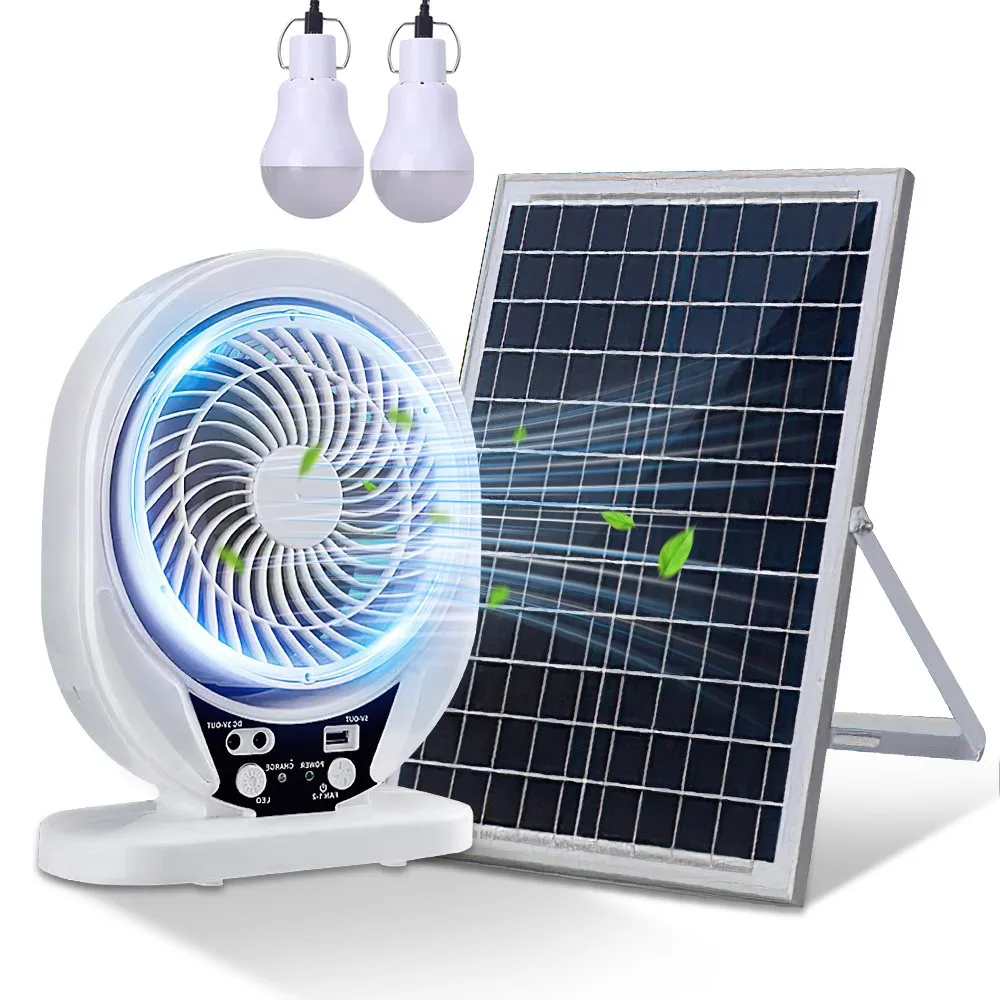 Choosing the Right Size and Type of Solar-Powered Fan
Choosing the Right Size and Type of Solar-Powered Fan
Selecting the correct solar powered fan depends on your specific needs. Start by considering the space you want to cool. Small fans work well for tents, car interiors, or personal use. They typically move 100–300 cubic feet per minute (CFM) of air. Medium-sized models suit rooms up to 150 square feet. These deliver 400–600 CFM and often include adjustable speeds. Large fans are designed for greenhouses, workshops, or patios. They can exceed 800 CFM and cover wider areas. Next, evaluate portability.
Handheld or clip-on fans are easy to move. Tabletop and floor-standing units offer stability. Wall-mounted versions save floor space. Some models combine features, like foldable panels and rechargeable batteries. Check the solar panel’s wattage. A 5-watt panel powers small fans. Larger units may need 10–20 watts for full performance. Battery capacity matters too. Look for models with 2000mAh or higher for extended runtime. Consider additional features. USB ports allow phone charging. LED lights add nighttime functionality. Remote controls or timers increase convenience. Weather resistance is crucial for outdoor use. IP-rated enclosures protect against dust and water. By matching size and features to your environment, you ensure optimal results.
Installation Tips for Maximum Efficiency and Longevity
Proper installation ensures your solar powered fan performs at its best. Begin by placing the solar panel in direct sunlight. Avoid shaded areas like under trees or eaves. Clean the panel surface regularly. Dust and debris reduce energy absorption. Angle the panel toward the sun for peak exposure. In summer, a lower angle works best. In winter, tilt it more steeply. Use adjustable mounts to change the angle with seasons. Secure all connections tightly. Loose wires disrupt power flow and cause malfunctions. If mounting on a roof or wall, use weatherproof fasteners. Ensure the fan has enough clearance around it. Blocked airflow reduces cooling effectiveness.
For indoor units, position near windows or vents. This promotes cross-ventilation. Outdoor fans should face open spaces, not walls. Keep the fan clean. Wipe blades with a damp cloth to remove dirt. Inspect the battery every few months. Replace it if charging time drops significantly. Store the unit properly in winter or rainy seasons. Protect it from freezing temperatures and heavy rain. Follow manufacturer guidelines for maintenance. Well-installed fans last for years with minimal upkeep. Correct setup directly impacts how efficiently a solar powered fan operates.
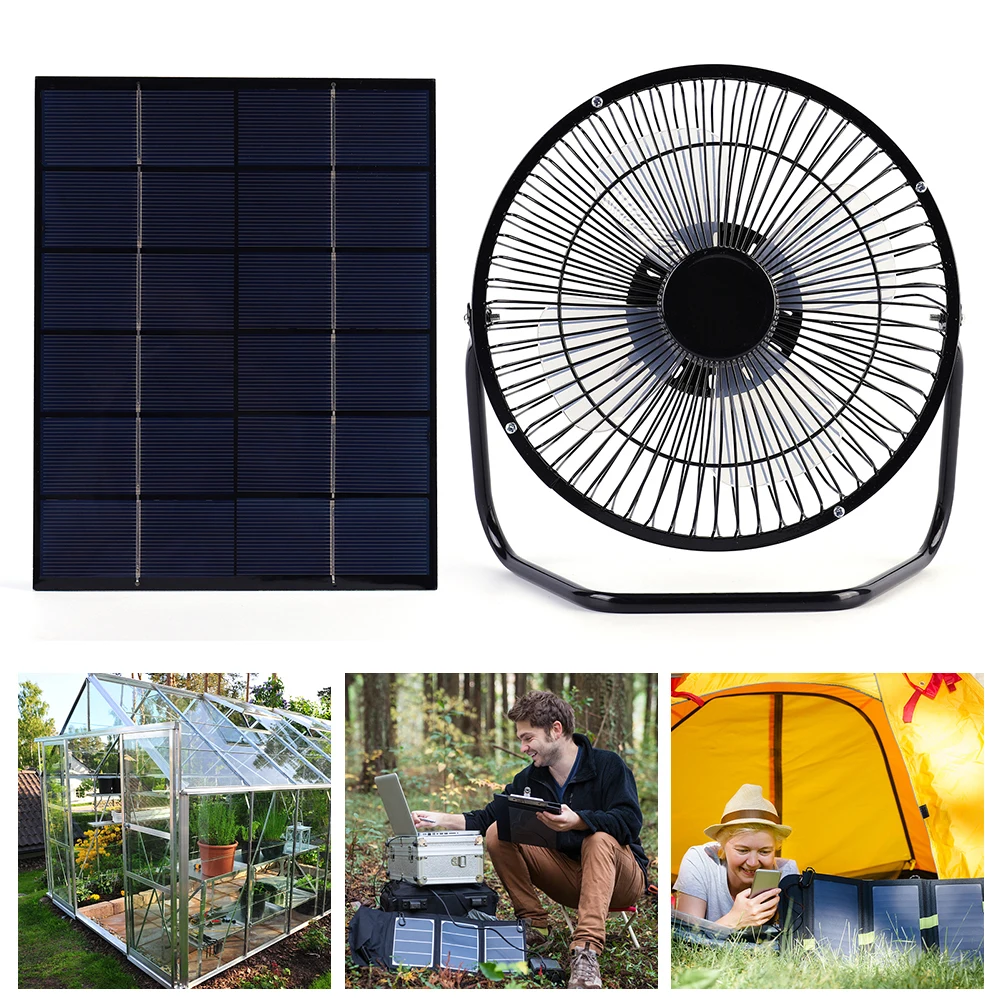 Comparing Solar-Powered Fans to Traditional Electric Fans
Comparing Solar-Powered Fans to Traditional Electric Fans
Solar powered fans differ from electric fans in several key ways. First, they don’t require grid electricity. This makes them ideal for remote or mobile use. Electric fans need constant power from outlets or extension cords. Solar models run independently once installed. Second, operating costs are nearly zero. Sunlight is free, so no monthly bills accumulate. In contrast, electric fans contribute to energy consumption. Third, solar fans are quieter. They lack the hum of transformers or long power cables. Many use brushless motors that operate smoothly. Fourth, they support environmental sustainability. No fossil fuels are burned to generate their power.
Electric fans, unless powered by renewable sources, rely on coal or gas plants. However, solar fans have limitations. They depend on sunlight availability. Performance drops on cloudy days or at night—unless batteries are included. Electric fans deliver consistent power regardless of weather. Also, initial costs for solar units are higher. But long-term savings offset this over time. Some hybrid models combine solar and AC power. These offer backup during low-light conditions. Ultimately, choosing between types depends on location, budget, and energy goals. Each has strengths, but a solar powered fan excels in off-grid and eco-conscious applications.
Enhancing Comfort During Power Outages and Emergencies
Power outages can happen due to storms, blackouts, or grid failures. During these times, staying cool becomes a challenge. A solar powered fan provides reliable airflow without electricity. It continues working as long as sunlight is available. Many models include batteries that store energy. These allow operation for hours after dark. Users can sleep comfortably even when the grid is down. Hospitals and care centers use solar fans in emergency wards. They maintain air circulation when backup generators are overloaded. Homeowners install them in attics to reduce heat buildup. This prevents overheating and protects roofing materials.
Emergency shelters equip sleeping areas with solar fans. They improve air quality and reduce stress. Families keep solar fans in disaster kits alongside flashlights and radios. These units require no fuel and produce no fumes. Unlike gas-powered options, they are safe indoors. They also work silently, which aids rest and recovery. In wildfire zones, smoke can trap heat indoors. Solar fans help vent hot air while conserving battery power. During heatwaves, vulnerable populations benefit most. Elderly individuals and children need stable temperatures. A solar powered fan offers peace of mind when systems fail. Its reliability in crises proves its value beyond daily use.
Frequently Asked Questions About Solar-Powered Fans
Do solar powered fans work on cloudy days?
Yes, most operate at reduced speed. Direct sunlight delivers peak performance.
Can I use a solar fan indoors?
Yes, if the solar panel is placed near a sunny window or outdoors.
How long do the batteries last?
Lithium-ion batteries typically last 2–5 years with regular use.
Are solar fans waterproof?
Some are weather-resistant. Check the IP rating before outdoor use.
Can I charge my phone with a solar fan?
Certain models include USB ports for charging devices.
Do they work at night?
Only if equipped with a battery. Otherwise, they stop when the sun sets.
How do I clean the solar panel?
Wipe it gently with a soft, damp cloth. Avoid abrasive materials.
Is professional installation needed?
No, most units are DIY-friendly and require no wiring.
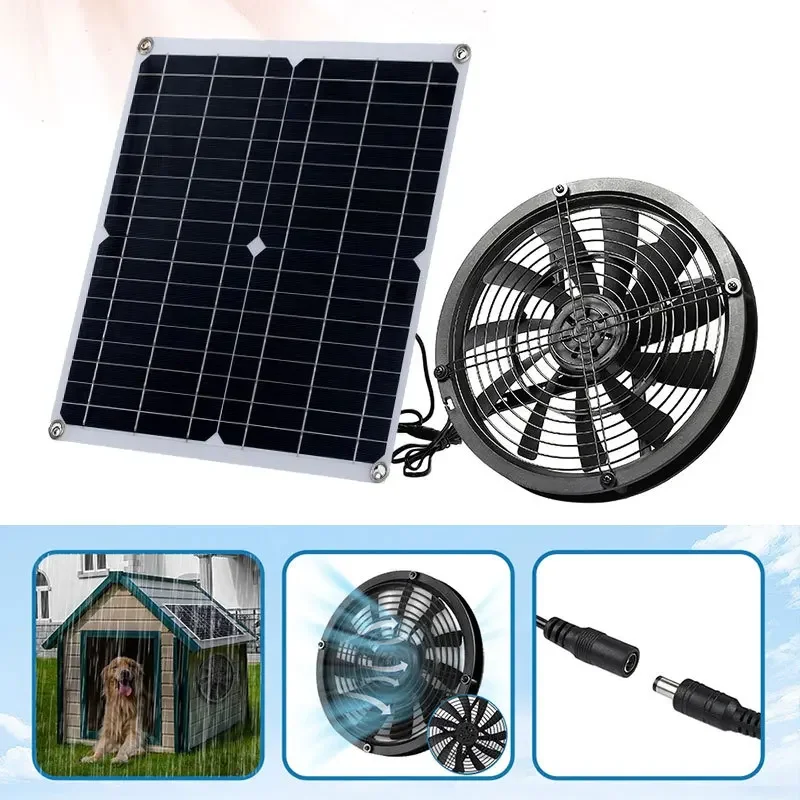 Final Thoughts on the Value of a Solar-Powered Fan
Final Thoughts on the Value of a Solar-Powered Fan
A solar powered fan delivers practical cooling with lasting environmental and financial benefits. It operates independently, reduces energy bills, and functions during emergencies. From camping trips to home installations, its uses are diverse. Moreover, advancements in technology have made these fans more efficient and affordable.
By harnessing the sun’s energy, users take a step toward sustainable living. Whether you live off-grid or simply want to cut energy waste, this device proves useful. Learning how to choose, install, and maintain a solar powered fan ensures long-term success. With proper care, it serves reliably for years. Ultimately, investing in a solar powered fan supports comfort, resilience, and planet-friendly habits.